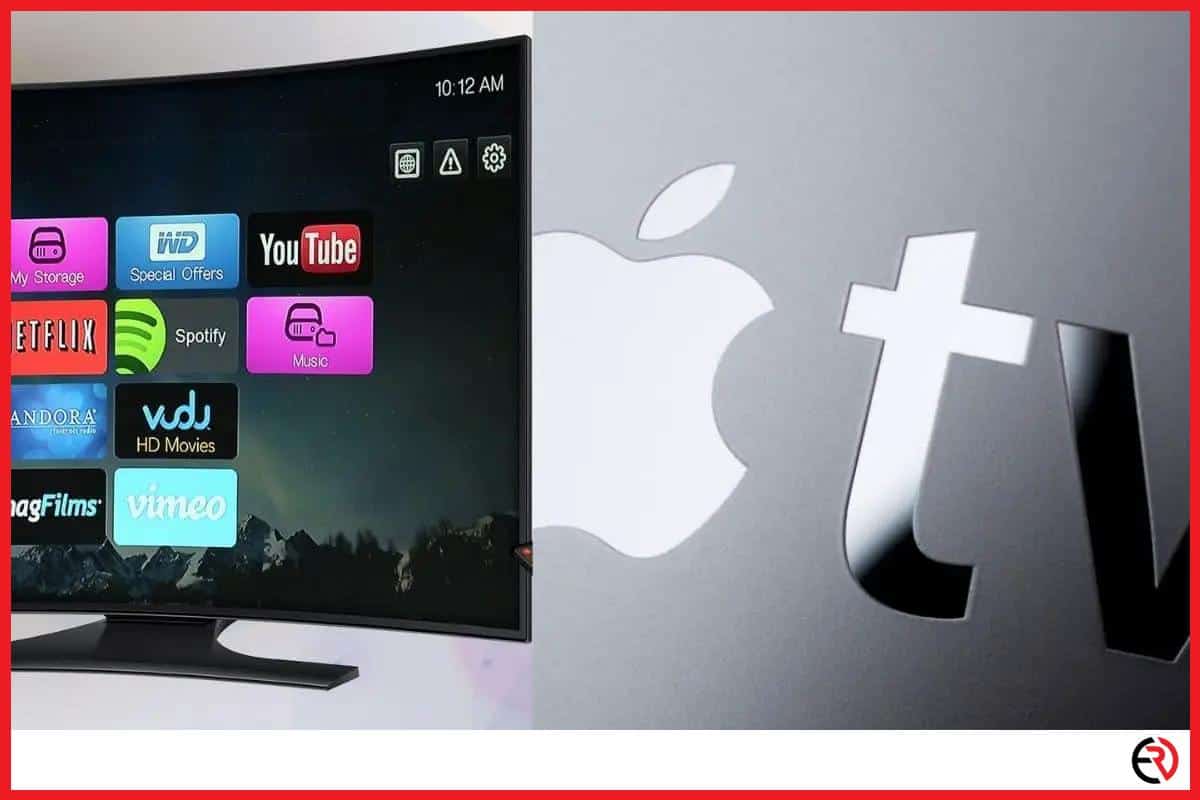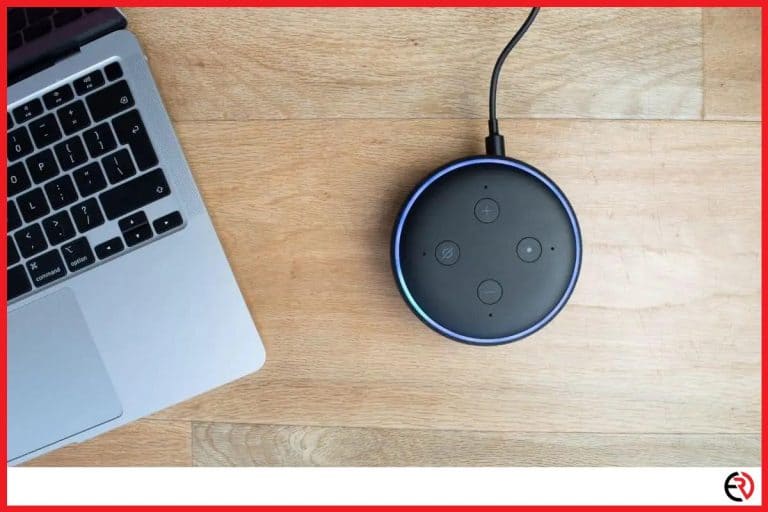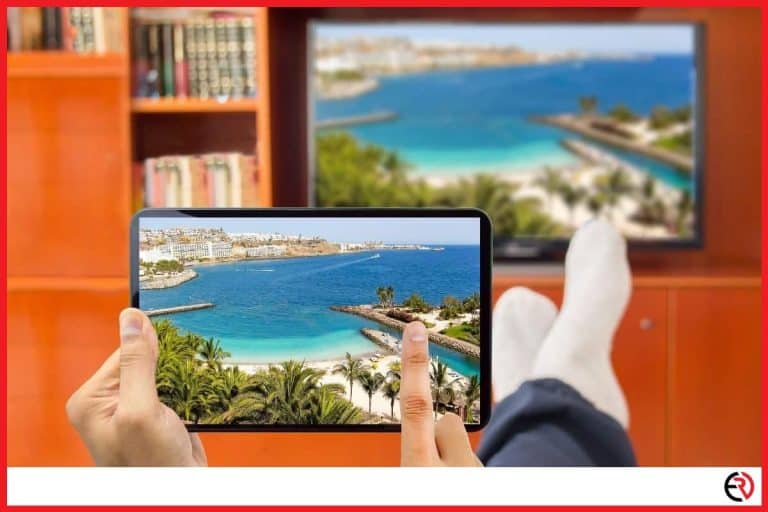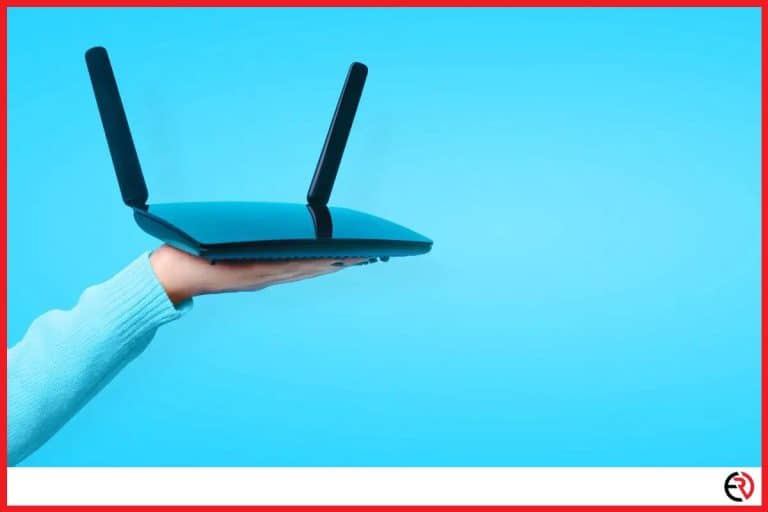Apple TV vs Smart TV (Pros & Cons)
This post may contain affiliate links which means that, if you choose to make a purchase, I may earn a small commission at no extra cost to you.
We live in a world of online streaming services and a neverending list of TV show collections that grow by the day. With no end of the content to browse through, the only challenge that remains is to select a medium on which to view such shows. While I preferred smart TVs running cable in the past, the world of Chromecast and Apple TV made me realize what I was missing out on.
So in this guide, I will be sharing my take on Apple TV vs Smart TV and hopefully help you decide which entertainment option is a better pick for your household.
| Name → Properties ↓ | Apple TV | Smart TV |
| Pros | Affordable compared to Smart TVs. | No need for a separate streaming device. |
| HomeKit integration allows users to control other smart home appliances. | Great Visuals and compared to some of them with up to 8K resolution support. | |
| Elegant design that’s suitable for every type of home. | Available in different shapes and sizes including curved displays. | |
| Miscellaneous Apps such as Netflix, Prime, etc. | Comes preloaded with streaming options such as Roku or Chromecast. | |
| 4K HDR Gaming and streaming. | Compatible with smart devices like Amazon Fire TV Stick, Chromecast, and even Apple TV. | |
| Mirror iOS Device. | Mirror Android device. | |
| Can turn any television into a smart television. | Can also run on cable without the help of smart devices. | |
| Cons | Expensive compared to other streaming devices | Very Expensive |
| Just Another App | Prone to security issues | |
| Reliance on Apple Products | Bad streaming quality on the slow internet network. | |
| Compatibility Issues | Older models tend to be slow as memory fills and more prone to crashes. |
Now that you have a basic grasp of the advantages and disadvantages of both devices, it’s time to dig a bit deeper into the topics and discuss exactly how beneficial they can be to your household. I have experimented with both devices over the past few months before taking the liberty to write this, so you can be sure the information is coming from first-hand practical experience.
In an attempt to cater to the preferences of all individuals, I have divided the test into two categories – Personal and Practical. Personal tests such as usability, affordability, and ease of setting up are subjective and vary from one individual to another and in some cases may appear biased. However, I have also interviewed my friends and colleagues and their opinions also helped shape this review.
Practical tests such as picture quality, available shows, app support, and backward compatibility are universal and benefit everyone involved and therefore not biased in any way whatsoever. Now, on with the actual comparisons!
Which has the better video quality?
Apple TV:
- Apple TV only supports shows up to 4K resolution videos. It is unable to stream 4K+ media even if the TV has a higher resolution.
- The 4K HDR on the Apple TV offers stellar picture quality that is visible on almost any resolution television.
Smart TV:
- Smart TVs support up to 8K resolution.
- Most shows are usually released on 4K and only a handful of them are released on 8K. Moreover, streaming 8K media requires high internet speed connections.
- It can hog up all the bandwidth, affecting the rest of the devices connected to the same network.
Winner: Smart TV
The clear winner is the Smart TV, at least not until Apple TV supports 8K. I like to have options especially when it is a Smart TV. I may not stream 8K content on a daily basis, but the fact the option is there should I want to experience it makes a whole lot of difference. 8K Smart TVs are somewhat expensive and I usually intend to use them for at least three to five years. With the pace at which technology is developing, seamless 8K streaming might be just around the corner and I would like to be ready when it does hit the market.
Which has better audio quality?
Apple TV:
- The Apple TV uses an HDMI port to transfer audio and video data directly to the television. So you will get high-quality audio if the TV supports it.
- For instance, when connected to compatible high-quality speakers, televisions with HDMI (eARC) ports will sound better compared to the ones with optical cables.
- I usually prefer this 4K HDMI audio extractor splitter when the TV has an HDMI input but lacks good speakers. It helps me reroute the audio to external speaker systems, even home theaters.
Smart TV:
- Many smart televisions manufactured before 2018 do not support Dolby Digital Plus over HDMI (ARC/eARC). So it’s best to check the specs sheet for such info before buying the TV.
- However, you will get high-quality audio as long as both your speaker and television support it.
Winner: Apple TV
Apple TV is the clear winner because the only limiting factor here is the television itself. You will experience high-quality Dolby Digital Audio if the televisions-speaker combination supports the feature. There is no use plugging an Apple TV into a smart television or speaker that does not support high quality or Dolby audio. Apple TV is flexible and it is the television that limits its potential, not the other way around.
Compatibility with older gen appliances?
Apple TV:
- The biggest advantage of the Apple TV is its compatibility with older TVs. With the help of extractors/converters, you can turn any ordinary television into a smart TV.
- The Apple TV, like Chromecast, handles everything. Applications such as Netflix, Youtube, and Apple TV+ are installed into the device itself and it streams the content to the television.
- Since the device only has HDMI output, you will need an extender to connect the Apple TV to an older television.
- The GANA HDMI to RCA connector helps me connect the Apple TV to any older-gen televisions that do not even have an HDMI port.
- One downside to using an HDMI to RCA connector is that you are limited to only two audio channels. You can overcome that with an HDMI audio extractor splitter to separate the audio and video. Go to the FAQ section for more details.
Smart TV:
- You cannot upgrade individual ports on smart televisions. No matter what kind of streaming service you choose, the quality of the content you are watching is dependent on the television.
- Although you can use extractors/splitters to connect with modern devices, there will be a slight downgrade in the overall audio/video quality.
Winner: Apple TV
The Apple TV is more flexible when it comes to future technologies. With it, you can enjoy content on all kinds of televisions, both old and new. However, there is no replacement for smart TVs lacking features. You will have to upgrade to newer variants if you want to enjoy high-quality content, whereas the Apple TV can shape its output based on its destination (compatible with both old gen and smart TVs).
Which one is more affordable?
Apple TV:
- The Apple TV costs around two hundred bucks plus the streaming services subscriptions (Netflix, Hulu, Disney Plus, Apple TV+).
- It’s compatible even with old CRT televisions (with the help of HDMI to RCA connectors), so you do not have to upgrade to a new generation of smart AMOLEDs.
Smart TVs:
- The cheapest smart televisions cost north of two hundred bucks making them quite a bit expensive.
- The user interface is not the friendliest and lags quite often, especially in the cheaper models due to the lack of internal space.
Winner: Apple TV
Apple TV offers the most value in terms of affordability. Even if you do not subscribe to any streaming platforms such as Hulu and Netflix, you can still enjoy free services such as Youtube and Twitch. And the best part is that that device is compatible with any kind of television, laptop, monitor, and even projector. You get so much more than you bargained for with the Apple TV that smart TV does not even come close.
Which one has a better user interface?
Apple TV:
- The user interface on the Apple TV is quite simple and easy to understand. You simply select the app/streaming platform you want to use and press ok.
- Every bit of processing work is handled by the Apple TV so there is no lag or delay whatsoever.
Smart TV:
- The smart TV user interface has a learning curve, especially since different TV manufacturers have different design preferences. For instance, Sony and LG have different UIs, and switching from one to the other may be difficult, especially for non-tech-savvy individuals.
Winner: Apple TV
Apple TV’s universal user interface gives it a major lead in this area. Someone who is accustomed to the ATV can simply plug it into a new television and start watching right away. But the same cannot be said in the case of televisions since the UIs of different companies are poles apart.
Which one is easier to set up?
Apple TV:
- It’s easy to set up an Apple TV. The instructions are not too difficult to follow and the device can be set up in about 5 minutes. Refer to the FAQ section for step-by-step instructions.
Smart TV:
- Smart TVs are also quite easy to set up. Simply switch it on and follow the instructions.
Winner: Tie
Neither the ATV nor the smart TV has any special setup protocol that you need to follow in order to set them up.
Which one supports more apps?
Apple TV:
- You can directly download apps from the Apple Store onto your Apple TV and almost all of them are optimized for the device.
- The ATV is also a powerful device and you can even play a few games on it. It can cause the device to heat up a bit due to the excess stress, but the ATV can easily handle it.
Smart TV:
- It usually depends on the operating system of the smart TV. The ones that come preloaded with Android OS are quite versatile especially since you can download apps from the Play Store.
- However, the televisions are loaded with just enough hardware to support seamless streaming. You cannot play games or perform stressful activities on these devices.
Winner: Apple TV
The Apple TV offers a more powerful and robust environment for you to move around. The hardware is also quite superior compared to any of the smart TVs.
How much internal storage is available?
Apple TV:
- The Apple TV offers two storage options: 32GB and 64GB.
Smart TV:
- Smart TV rarely offers somewhere between 1GB to 5GB of storage, sometimes even less because of the pre-installed stock apps.
Winner: Apple TV
The ATV is the clear winner here especially since it has way more storage that gives you lots of room to download apps and even games.
FAQ
How to connect Apple TV to old generation television with only RCA input and a different speaker system?
You will need an HDMI audio extractor splitter to separate out the audio and video. Use an HDMI to RCA cable for connecting to the television and an optical cable for connecting to a different speaker system. Here are the steps to achieve this setup:
1. Connect the output from the Apple TV to an HDMI audio extractor splitter.
2. The HDMI output from the extractor goes into the old television. Use an HDMI to RCA cable but plugin only the CVBS video input into the television. We will be using external speakers for audio.
3. Use an optical cable to connect the splitter to your external speakers.
Now you can use the Apple TV and modern-day home theater systems in conjunction with older generation televisions.
How to set up the Apple TV?
To set up Apple TV connect it to your TV, power it on and follow the on-screen instructions. Here are the detailed steps:
1. Power on the Apple TV after connecting it to your television via the HDMI cable.
2. Switch on your television and select the HDMI port to which the ATV is connected.
3. Pair the remote by pressing the trackpad.
4. Choose your language and country and click on continue.
5. Choose whether or not you want to use Siri.
6. Select if you want to improve audio dictation.
7. Choose how you want to set up your device. You will need an iPhone if you choose the ‘set up with device’ option.
8. If you choose to set up with the device, then unlock your iPhone and connect it to the same Wi-Fi network as your Apple TV.
9. Wait till you see the Apple TV prompt on your iPhone and tap on Set Up.
10. Type in the authentication code that’s shown on the TV screen.
11. Wait till it’s finished connecting and then select yes you want to use a password for online purchases.
12. Sign in to your TV provider or you can skip it for now.
13. Select if you want to sync your home screen across all of your Apple TVs.
14. Select the room where the ATV is located.
15. Choose if you want to use location services and screensavers.
16. Finally, select if you want to send analytics and app analytics to Apple to improve their products and accept the terms and conditions.
17. In case you choose a manual setup, you’ll be asked to connect to the Wi-Fi first and then go back to step 15.
Conclusion
Although Apple TV needs a television to function, it offers way more value when compared to Smart TVs. I have an old Samsung TV from 3 years ago and do not feel the need to upgrade simply because of my Apple TV. It may not be compatible with Android smartphones, but that’s a reasonably small price to pay compared to the benefits offered by the ATV. Hopefully, you are now one step closer to making a decision than you were at the beginning of this article. Stay tuned for more tech tips in the future.







